Pleated skirts came into Russian fashion from medieval Western Europe, where this wardrobe item was an integral part of folk clothing. This style was at the peak of popularity in the 80s of the last century, but now it is back in fashion.
There are many types of such skirts, as the folds present on them can be small, wide, asymmetrical and counter. With free time, a suitable pattern and the necessary materials, even a novice needlewoman can independently make folds on a skirt of different types.
With minimal effort, you can create a feminine wardrobe item, so that you can experiment with creating original everyday, romantic and festive looks.
How to calculate folds
The pleats on the skirt (the types, the principle of seam processing and the rules for cutting fabric are recommended to be studied before sewing a beautiful, stylish item) can be narrow if the girl has an hourglass figure, which is the standard of femininity.
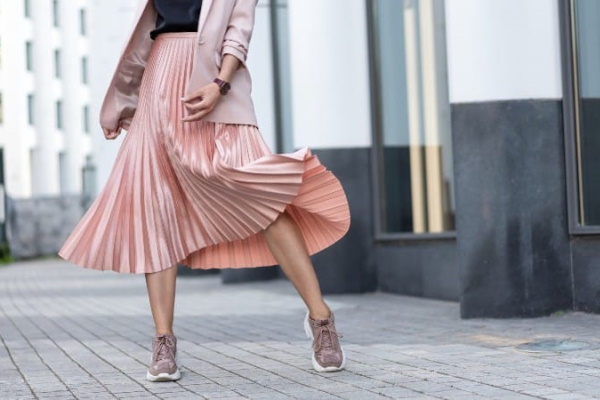
This wardrobe item can be safely worn in the cold season, but only on condition that it is made of thick material (for example, denim):
- According to the standard scheme, to correctly calculate the folds, you need to multiply the hip circumference (HC) by 3. Seam allowances are added to the sides.
- Experienced needlewomen recommend using the formula: (OB + allowance) / fold width.
- If the resulting number is a fractional number, then you can use another formula. For example: (OB + allowance) / desired number of folds. As a result, you can find out the width of 1 fold.
- To avoid common mistakes, you need to study the following example: The girl's OB is 102 cm + allowance of 4 cm = 106 cm. If the fold is 6 cm wide, then 102/6 = 17. From this example, it turns out that the product will have 17 folds.
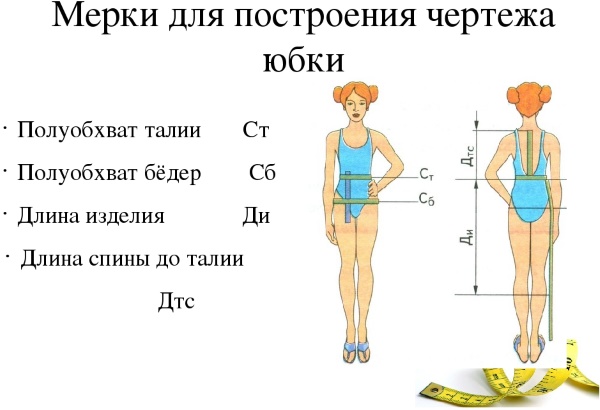
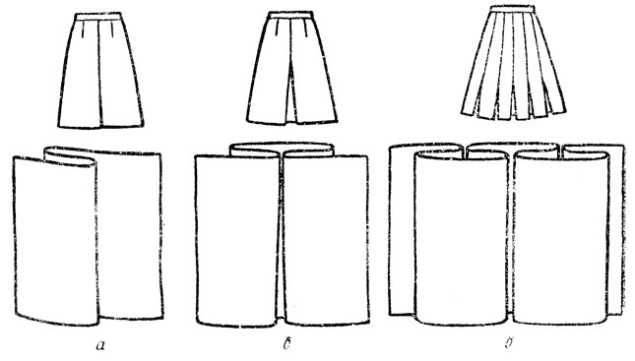
- Each fold has its own depth, which is usually understood as 2 of its widths. Regardless of the type of skirt, the final amount of fabric required will be equal to three times the OB + 4 cm for allowances, so as not to feel constrained while moving.
For example, if the hip circumference is 102 cm, then the fabric will need to be prepared 310 cm.
How to make pleats on a skirt of different types
Pleats on a skirt help to emphasize the advantages of the figure and hide the flaws. Girls with curvy hips should choose a model with wide folds to make the image more refined and feminine. Slender representatives of the fair sex will suit skirts of any length made of flowing fabrics.
It is important to take into account the fact that chiffon and silk hug all the curves of the body, which is why such materials can highlight problem areas. Different types of pleated skirts allow you to create unique, feminine looks for any occasion.
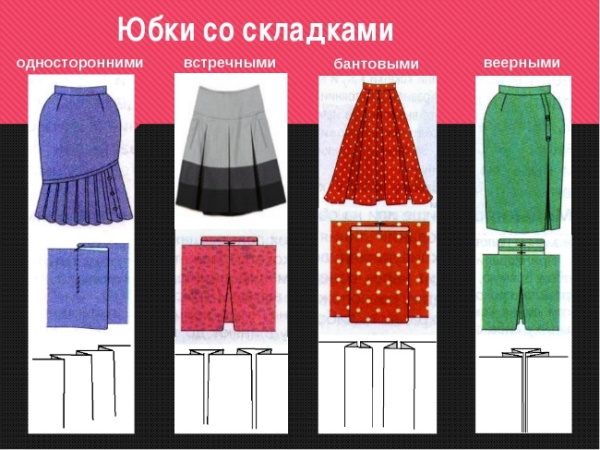
The most popular skirt among modern fashionistas is a skirt with an elastic band. It is slightly flared at the bottom and has a midi length. This style is most suitable for women with slender legs.
Skirts with a train look no less stylish when there is an asymmetrical cut and an elongated back. Fashionistas with an athletic build will suit a tennis skirt, the folds of which are sewn up at the top.
| Skirt model | Peculiarities | Which figure is more suitable for? | Recommended style |
| With a wide belt | This is an original floor-length skirt with multiple small pleats, which should be sewn from airy, flowing fabrics. The product should narrow closer to the waist. | Thin waist, narrow hips. | Casual, romantic |
| With small pockets | The optimal length of the skirt is midi. The pleats should be bow-shaped. Additionally, the presence of pockets that are invisible to others is provided. | Curvy hips | Sport chic, casual, everyday |
| Straight | The skirt should be wide, with straight, even folds. | The product is universal, as it suits any body type. | Casual, business |
| Lush | This category includes multi-layered skirts (made of organza or chiffon) that resemble a crinoline. | This is an excellent skirt model for girls with an apple figure, as well as for women during pregnancy. | Street, retro, neoclassical, casual |
| Japanese | The skirt should be short, checkered or monochrome. The style of the item should resemble a schoolgirl's uniform. | Products of this model are intended for fragile girls with a thin waist and slender legs. | Street, sport chic |
| Half sun, sun | In the first case, the skirt is sewn from a hemisphere, and in the second - from a circle. The product should be flared. | Sun and half-sun skirts are suitable for girls with any type of figure. | Business, romantic, casual, grunge |
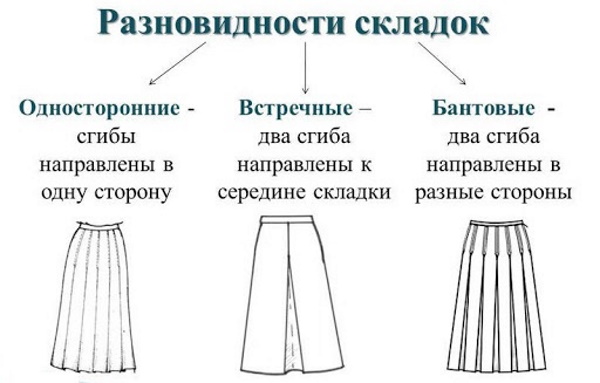 The following styles are no less popular: tatyana (a flared skirt to the middle of the knee with an original belt and voluminous folds), a pencil skirt (the product turns out original due to narrow folds). The first option will help to hide curvy hips and extra pounds on the stomach and sides.
The following styles are no less popular: tatyana (a flared skirt to the middle of the knee with an original belt and voluminous folds), a pencil skirt (the product turns out original due to narrow folds). The first option will help to hide curvy hips and extra pounds on the stomach and sides.
The second style is ideal for short women, as the tapered silhouette of the skirt visually makes the girl look taller.
To prevent the fold from losing its original shape and from coming apart at the bottom, it should be laid only at a right angle when constructing the model drawing. On the pattern, each arrow can be marked with arrows that will be located vertically.
When creating patterns, it is important to remember that the folds are formed from the front side. The width of the folds is calculated, but not marked on the pattern. The necessary marks are applied to the prepared fabric from the back side with a special tailor's chalk, a sharpened soap scrap or a water-based marker.
When forming the corner, you need to make sure that the fold fully corresponds to the data written on the pattern. Otherwise, the final result will not meet expectations.
Oncoming
To sew a skirt with inverted pleats, there is no need to engage in constructing a pattern, since the main task of the needlewoman is to correctly perform all the calculations. It is necessary to cut 2 rectangles across the entire width of the fabric so that their height corresponds to the length of the future product. For example, 140 (width) x 40 (length) cm.
Additionally, you need to take into account the presence of fabric allowances for seams and careful hemming of the lower part. If the girl's waist is within 73 cm, then for the belt, the width of which will be 4 cm, you need to cut out a strip of 4x85 cm (all allowances taken into account). After this, you can apply the markings.
The first thing to do is to grind the fabric along the side seams. A circle should be formed, the circumference of which will be 2.80 m. Many folds can be formed, but with such parameters of the figure, 12 pieces will be enough.
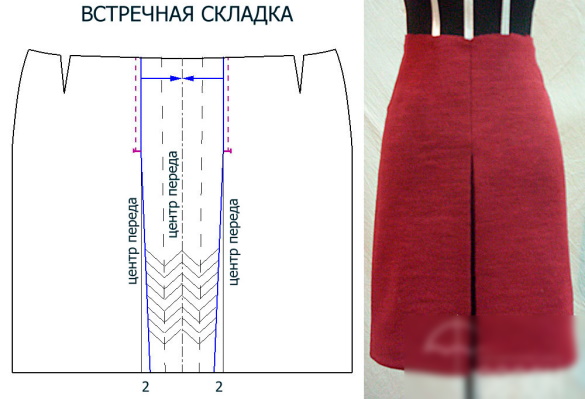
Calculation of folds:
- To find out how much fabric to put in the depth of the folds, you need to subtract the waist circumference (WC) from the garment circumference: 280 - 73 = 207 cm.
- If you need to know the depth of the folds, then you should divide the obtained value by their number. For example, 207/12 = 17.2 cm.
- To achieve the desired result, you also need to calculate the distance between the folds: OT / number of folds. According to the example given, the result will be: 73/12 = 6.08 cm.
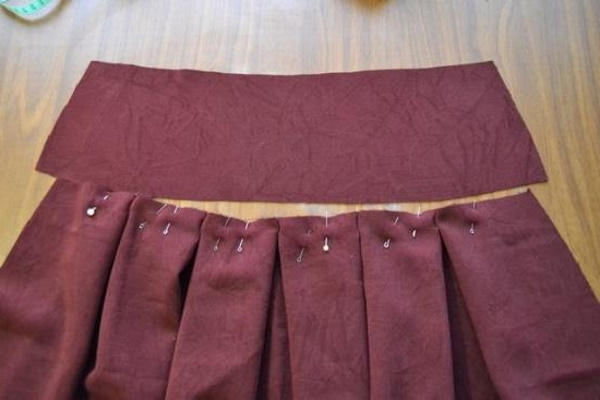
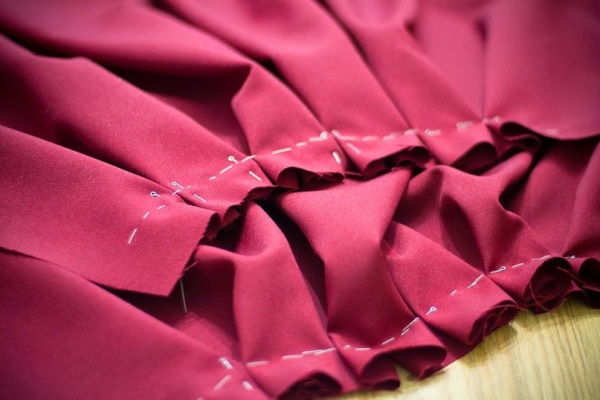
All further actions must comply with the following scheme:
- The last two obtained values (17.2 and 6.08) should be alternately set aside along the upper edge of the product. As a result, all side seams should be located in the central part of the side folds so that they are not noticeable.
- You need to start with the side seam, from which 8.6 cm are measured in both directions (exactly half the depth of the fold), and then 6.08 cm, 17.2 cm, again 6.08 cm, 17.2 cm. The product is processed in a similar way along the entire edge. The second side seam is hidden in the central part of the fold.
- It is easy to make a mistake when marking the material, as it is quite difficult to work with mm. Experienced needlewomen recommend gradually moving from the side seams to the central part of the product.
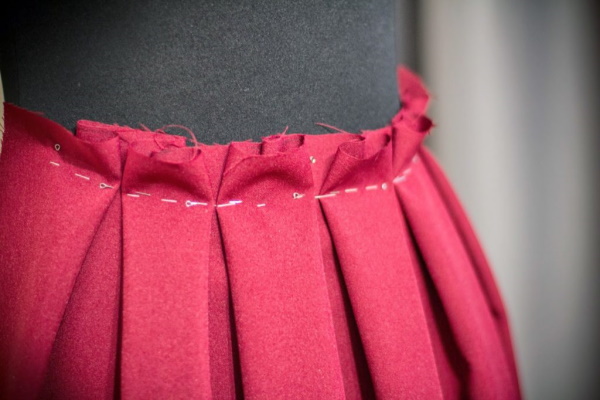

- The necessary marks are placed on the upper part of the manufactured product. If the needlewoman does not plan to iron the folds, then there is no need to draw lines from top to bottom.
- It is necessary to form folds in the most precise accordance with the markings. 17.2 cm is calculated for 1 fold. Each such piece of fabric should be folded in half (the front side should be inside) and the marks of the existing borders should be combined.
- To secure the parts of the product, temporary stitches are laid from the mark (within 7 cm), which should be directed downwards.
- To mark the fold of the inner part of the fold, you can make a notch. You will get a large fold, from which you will have to form 2 counter folds, but smaller ones. The notch is combined with the seam. The formed folds are pinned to the cut.
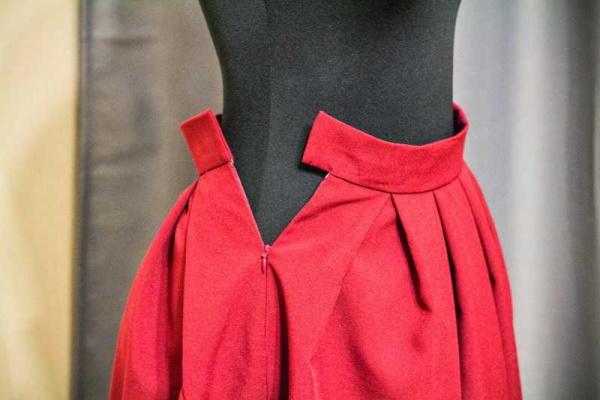
If everything is done correctly, the folds will be quite deep, since on the reverse side their folds will overlap. This technique is appropriate if the needlewoman works with thin, light material. If the fabric is dense, then folds of lesser depth should be formed.
Otherwise, extra volume will be created at the waist, which will make the finished item look fat.
When all the details are laid, you need to lay a fixing line along the entire top so that the skirt holds its shape. You should start and finish the line from the seam into which the zipper will be sewn. At the final stage, it remains to sew in the zipper, process the waistband and the bottom part, and also remove the temporary stitches.
One-sided
Pleats on a skirt (the types of this item of women's wardrobe impress with their diversity and versatility, since a correctly selected model allows you to add femininity to your image and emphasize the charms of your figure) can be vertical and one-sided.
In this situation, we are talking about a straight elegant skirt with a tapered silhouette. Such a wardrobe item attracts the attention of others with its sophistication and restraint. For sewing a skirt with one-sided pleats, preference should be given to smooth, soft materials. For example, wool flannel, gabardine, rep.
It is better to avoid dense, stiff fabrics, as the product will not hold the required shape.
An integral element of a woman's wardrobe with elegant one-sided folds should consist of the front part (the width of the formed fold) + 2 parts invisible to others (the depth of the fold). The maximum depth of the fold should correspond to its width x 2.
But the final value can be adjusted if there is no extra fabric or if a fancy strip is adjusted to fit the folds.
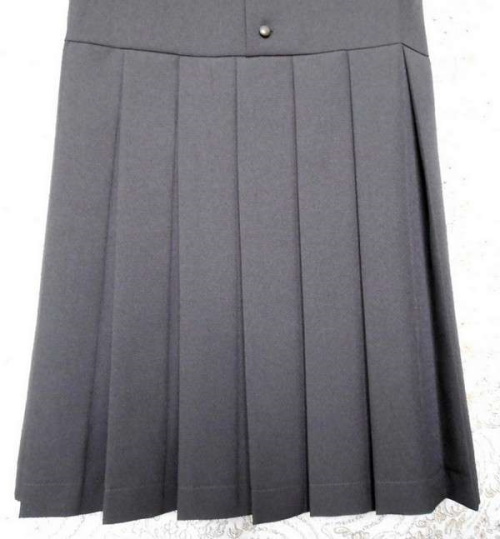
To calculate the amount of darts along the waist, you need to perform several arithmetic operations: (hip circumference + additional cm for a free fit) - (waist circumference + allowance for a free fit):
- For example, (106 cm + 6 cm) - (80 cm + 4 cm) = 28 cm.
- The obtained data should be divided between the existing folds. For example, 28 / 23 = 1.2 cm.
- The depth of all folds along the waist on both sides is increased by 0.6 cm (1.2 / 2 = 0.6 cm).
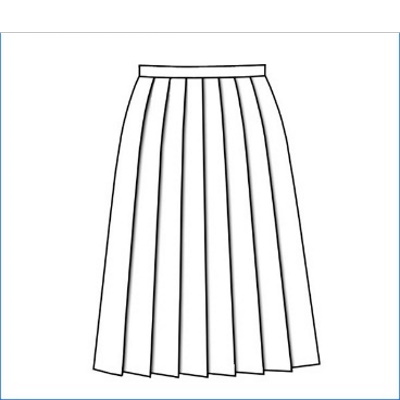
All further actions are performed in a clear sequence:
- Mark the folds on the wrong side of the material. From the edge of the fabric, measure out the following in sequence: seam allowance (4 cm), half the depth of the folds along the hips (6 cm), the width of the fold (6 cm), its full depth (12 cm).
- The marking of the fabric is completed with half the depth of the fold and an allowance for seams. The depth of each formed fold is increased by 0.6 cm along the entire waist.
- To make the skirt flare out at the bottom, you need to gradually reduce the depth of the folds by 3, 6, 10 mm on each side along the bottom of the product. The longer the final product is, the less the depth of the folds should be at the bottom. Start reducing the depth from the hips.
- If the markings are applied to the back of the prepared material, then all the lines are transferred one by one to the front side using lining stitches.
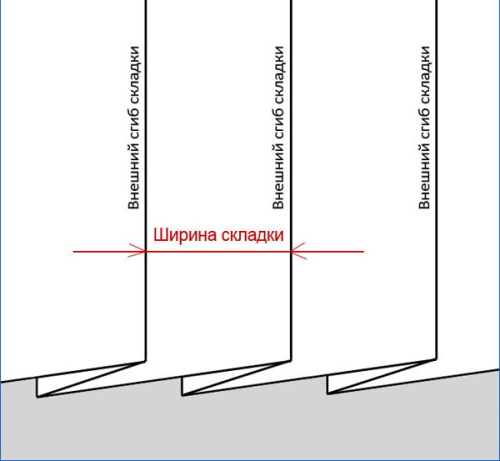
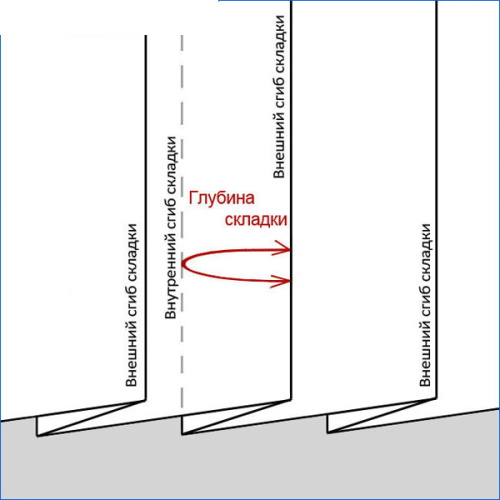
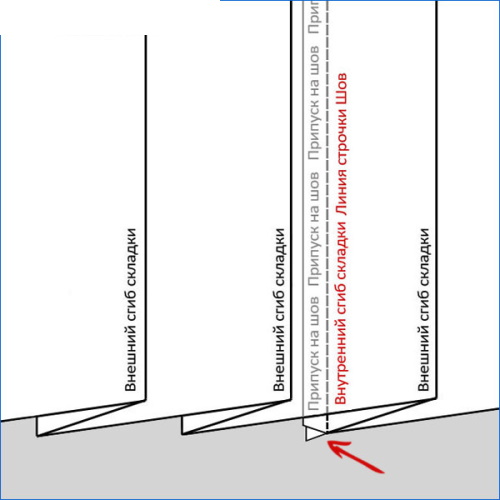
- All seams (except one) need to be stitched. The bottom of the skirt is hemmed, but 15 cm should remain to the edges.
- From the front side, along the previously drawn lines, form folds, carefully sweep them, and secure them with diagonal stitches across the entire width.
- The folds should be ironed, the basting removed, and then the garment ironed again using a pre-moistened ironing pad. The folds should fit tightly to the skirt.
- Stitch the seams, finish hemming the bottom of the garment and sew in the concealed zipper.
All that remains is to process the upper part of the skirt with a small piece of fabric, having first glued the adhesive interlining along the waistline with a hot iron or having stitched a lining onto the waistband.
Bow
Clothing with bow-type pleats is a universal item of women's wardrobe, thanks to which you can create original, festive images. This style of women's clothing goes well with tight-fitting tops, stylish T-shirts and light blouses.
This item of women's wardrobe helps to hide wide hips. The width of the folds can vary from 5 to 12 cm. The folds can be asymmetrical or fan-shaped. To sew a skirt yourself, you need to correctly calculate the number of folds. The prepared fabric should be divided into 2 equal parts.
If you do not take into account the seams, then the width of each segment should be 1.40 m. The length of the product depends on the personal preferences of the needlewoman. The pieces of fabric should be sewn together. The total width of the workpiece should not be less than 2.80 m. The seam should be carefully processed, ironed. The lower part of the product should be hemmed.
If the girl's hip circumference is 1 m, then the fold width should be at least 50 mm. To find out the exact number of folds, you need 100 cm / 5 cm (6 or 7). The result will be 20. To calculate the depth of the fold, you need to adhere to the formula: width of the fabric - hip circumference. For example, 280-100 = 180 cm.
We divide the resulting number by the total number of folds (180/20). It turns out that the depth of 1 fold will be 9 cm.
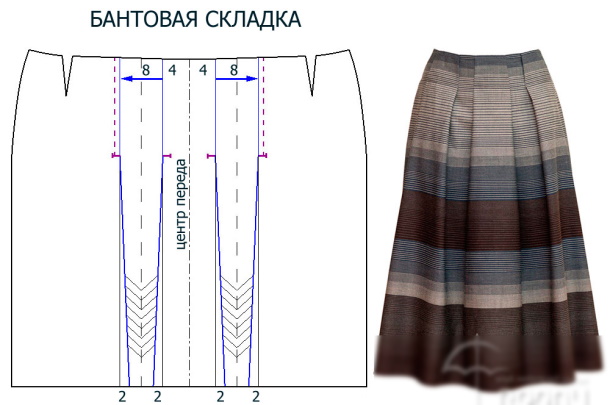
After completing the calculations, you can mark the fold locations on the fabric and begin ironing. The final width of the product should be no more than 105 cm. Otherwise, all excess should be hidden in folds.
The most difficult stage is the construction of the pattern, which only experienced needlewomen can do without. It is recommended to cut along the warp thread. Otherwise, the product will be skewed, which will make the skirt uneven. After applying the markings, you should fix the folds with pins and baste them.
The existing workpiece should be ironed on both sides, using a damp piece of gauze for this purpose, in order to achieve maximum fixation of the folds. The markings are removed. It remains to process the hem and sew on the petticoat (if it is supposed to be there).
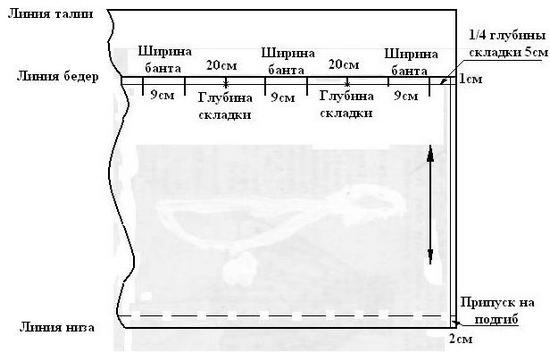
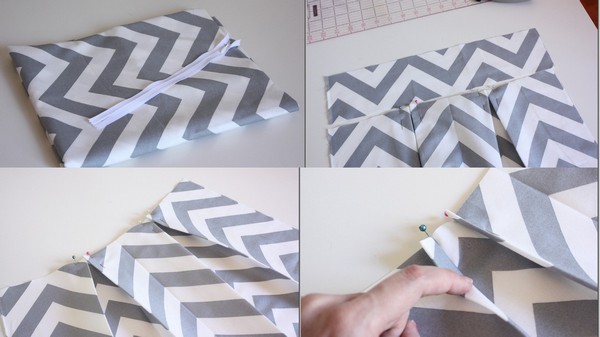
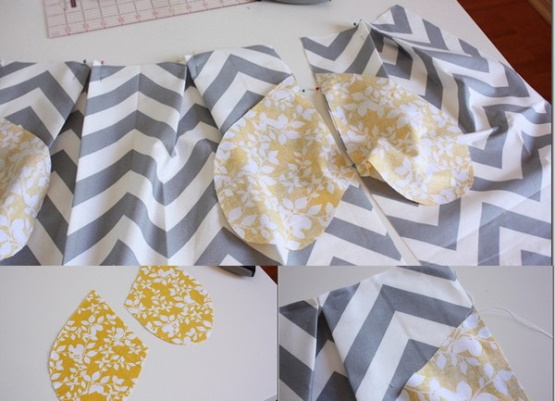
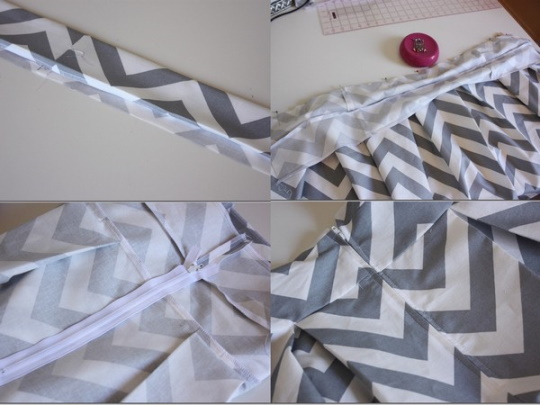

To make this essential element of a woman's wardrobe look more attractive, you need to sew the belt with the raw edge, and then sew on a clasp or button. The length of the belt corresponds to the waist circumference, but you need to add 5 cm for seams. It remains to insert the zipper and you can try on the finished product.
Fan-shaped
The pleats on the skirt (types of fan pleated skirts imply the use of only light, flowing fabrics so that the finished product is not bulky and can be worn by women with different body types) can be full or partial.
You can cut out the pleats at the same time as the main piece, but only if you have enough fabric in reserve. Otherwise, cut out the pleats separately to be sewn to the skirt later. The seam is carefully hidden in the inner fold of the first pleat so that the product turns out neat.
Double depth is used for the counter fold, so that each subsequent fold differs from the previous one by 10 mm. If everything is done correctly, then on both sides of the central part there will be 3 folds, which will have the following calculation scheme: k + k / d + d / h + h / the middle of the fan of the skirt / h + h / d + d / k + k.
To ensure that the product meets all requirements, you must adhere to the following procedure:
- Mark the lines on the back of the fabric to avoid making mistakes during the work. Transfer all the lines to the front side using basting stitches.
- To the right of the central part, the line of the third fold must be ironed. To do this, run a hot iron along the outer + inner edge of the fold several times.
- The first and second folds should be ironed along one line.
- You need to apply the fabric to the base piece (with the right sides facing each other) to be able to lay a line, marking the area where the fan being formed from the fabric will open. After this, the ironed folds should be located on one side of the line passing through the marking lines.
- The product should be unfolded so that the main elements without folds are located in the center, at the top. It is necessary to lay a new line (the distance from the previous line should be within 5-6 mm). As a result, the line should connect all the folds (only on one side from the center).
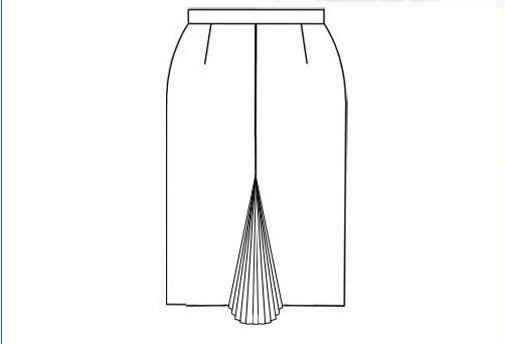

This line should be the same or slightly smaller than the line located in the center. You need to shift the product a little to lay the line across the folds, connecting them towards the top edge. These steps should be repeated for those folds that are located on the opposite side from the central part.
All that remains is to remove the basting lines and try on the skirt to correct any imperfections.
After using a hot iron, the product is pressed with a heavy object (press) to a flat surface until the material has completely cooled. It is necessary to check how the material reacts to the effect of a hot iron to exclude the possibility of a specific shine. For the front side, an ironing board should be used.
Circular
The pleats on the skirt (the types of fabrics for sewing skirts differ in their diversity, but it is better to give preference to chiffon, jersey, cotton, tulle or silk, so that the product is light, elegant and feminine) can be circular. To sew such a wardrobe item yourself, you must first take measurements and prepare a pattern.
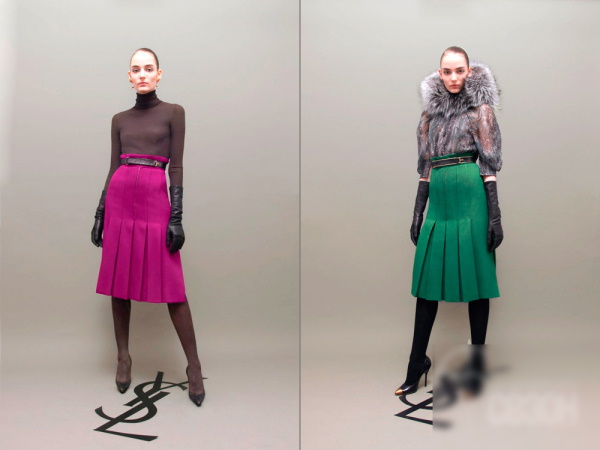
In this case, you need to add 3 cm along the waist, and 5 cm along the hips. It is recommended to buy fabric taking into account that it can be wrapped around the hips at least 3 times + allowance for a loose fit, seam allowance and their final finishing. You should add 8 cm to the desired length of the product.
The narrower the prepared piece of fabric, the larger the allowance should be (from 20 to 35 cm). If the material is wide, then 10 cm will be enough for allowances. Along the hips, the width of each fold should be from 3 to 8 cm, and the depth - from 6 to 12 cm. To calculate the number of folds, divide the width of the fabric along the hips by the width of the fold.
For this case, there is a simple formula: (hip circumference + hip line allowance) / 5. For example, (116 + 5) / 5 = 24.
After completing all the necessary calculations, you can proceed to the main process:
- After sweeping the material at a distance of 20 cm from the waist, you need to draw a straight line for the hips. The dots should mark the location of the folds. From the edge, you need to step back 1.5 cm for seam allowance and put a dot, set aside 50% of the fold depth and put a dot again.

From the new point, the width of the fold, then its depth, width are measured. At the final stage, it remains to mark half the depth of the fold and the seam allowance (10 mm).
- The fabric needs to be stitched, skipping the last seam. The bottom of the product should be swept and hemmed so that there is a 10 cm gap to the unfastened edges.
- Along the entire bottom, the depth of the folds should be reduced by 10 mm. The lines of the intended fold (10 mm) should be drawn through the points marked along the hips. If the markings are applied to the inside of the material, then all lines should be stitched with interfacing stitches.
- On the front side, you need to form folds from the hip to the very bottom and secure them with basting stitches. After that, the folds are laid down to the waist from the hips and carefully ironed.
- If the width of the workpiece in the waist area is larger than necessary, then the excess fabric should be hidden in folds along the entire waist. From the waist line to the hip line, all folds should be secured with basting stitches and ironed through a damp cloth.
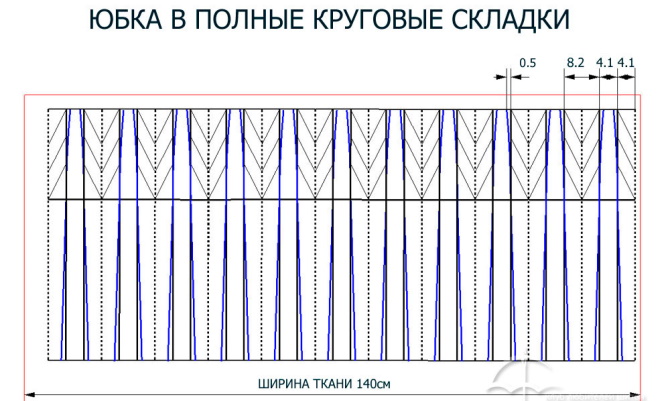
All that remains is to stitch all the formed folds and remove the temporary seams. The final seam needs to be stitched and the hemming of the bottom of the product finished. You can make original folds on the skirt yourself in just 1-2 evenings. But for this, the needlewoman must know exactly what result she plans to achieve.
To do this, at the first stage it is recommended to familiarize yourself with the types of pleated skirts, which, if chosen correctly, can not only diversify the image, but also hide extra pounds in the hips and abdomen.
Video about folds
Pleats on a skirt. Types:
